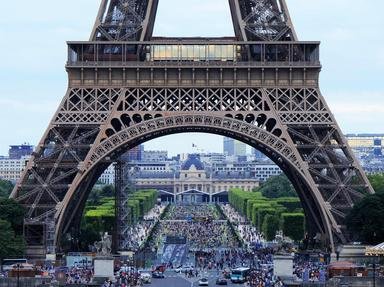Quiz Answer Key and Fun Facts
1. At 276 meters above the ground, the Eiffel Tower's top floor is one of the highest points you can visit in the city of Paris. This landmark overlooks what lengthy park space below?
2. The top of the Basilica of the Sacred Heart is one of the highest points in Paris because it overlooks the city from atop one of its tallest hills. Which hill does this landmark sit upon?
3. Which hill marks the highest plot of land above sea level in the City of Paris?
4. A short distance to the west of Central Paris, this structure stands 110m tall. Known as La Grande Arche, what shape does it form?
5. Found on l'Île de la Cité, Notre-Dame de Paris has been memorialized in literature and film for centuries. During which of these events did the structure have its construction completed?
6. The Arc de Triomphe only reaches a height of 50m, but from the top you can easily see straight down what famous avenue?
7. The Louvre Pyramid was created by I. M. Pei and sits in the middle of a courtyard in the Palais du Louvre. To enter the museum from there, you need to descend into the pyramid.
8. The Seine River cuts across the city of Paris flowing from southeast to northwest. Where does the river ultimately come to an end?
9. Beneath the streets of Paris lie its world-famous sewers. If placed end-to-end, for approximately how long could these tunnels extend?
10. Deeper than Paris' sewers and metro lines, the Catacombs are said to reach twenty meters below the city. This is possible because they were formed in which of these locations?
Source: Author
kyleisalive
This quiz was reviewed by FunTrivia editor
agony before going online.
Any errors found in FunTrivia content are routinely corrected through our feedback system.
